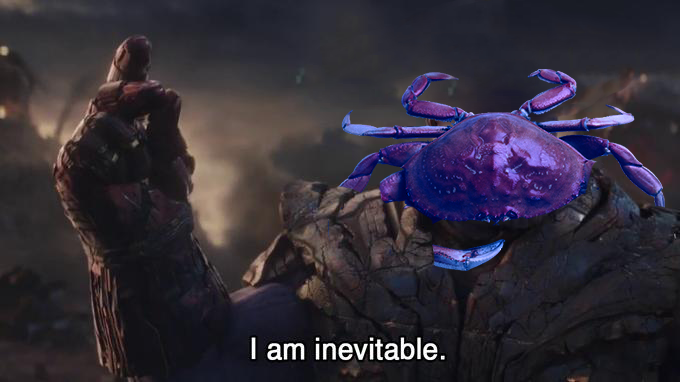In what is one of the strangest quirks of nature – crustaceans keep evolving into crabs. Sort of.
The process – known as carcinisation – has been observed independently in several different species. It is a very loosely defined term and was first coined in 1916 by zoologist Lancelot Borradaile as “One of the many attempts of Nature to evolve a crab”.
Species of crustacean that initially began as other animals have evolved crab-like forms on five recorded occasions. This form includes a flattened body and distinctive ‘underbelly’ that only crabs seem to possess.
The five independently evolved crabs are King crabs, Porcelain crabs, Hairy stone crabs, Coconut crabs and True crabs. Each of these species evolved independently from ‘non-crab’ species.
Even more remarkably, in a 2017 paper, Keiler et al. found that these similar characteristics aren’t just skin-deep. They go right down to their vascular and neurological systems which also bare extreme resemblance to one another.
Convergent Evolution
The reason this is happening is due to a phenomenon known as ‘convergent evolution’. When animals occupy similar environmental conditions, they tend to evolve similar traits to better adapt to these environments. Simply put, similar problems tend to lead to similar solutions.
Convergent evolution is quite common and crops up in unexpected places. For example, both dolphins and bats have evolved echolocation completely independently from each other. Another example is the streamlined body shape of marine mammals and fish, used to maximise speed during movement.
It even occurred in early humans. When darker skinned humans migrated out of Africa to more northern areas, it became beneficial to reduce skin pigmentation. This happened independently in both humans that travelled to Europe and humans that travelled to Asia, with both groups’ skin becoming lighter.
So why is carcinisation special?
Whilst convergent evolution is common, carcinisation is still distinctively consistent. It is more prevalent and is strangely common, compared to other examples of convergent evolution.
However, what scientists define as a ‘crab’ is completely based on human opinion. We have decided to call a specific group of traits a ‘crab’.
As zoologist Gerhard Scholtz writes, ‘carcinisation is neither ‘fact’ nor ‘fiction’ – it is a construct of our minds based on inferred evolutionary processes. It is not a fact, because a small set of evolutionary morphological transformation is arbitrarily called a crab…it is not a fiction because these morphological changes are an evolutionary reality.’
So whilst carcinisation exists and the crab form is favoured in certain environments, there is no force specifically changing things into crabs – nature is merely encouraging crustaceans to adopt these features that we associate with crabs. Evolution is blind, there is no conscious thought behind it, just a never-ending force that helps us survive across the generations.

This was surprisingly fascinating, I now have more respect for crabs